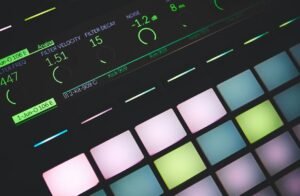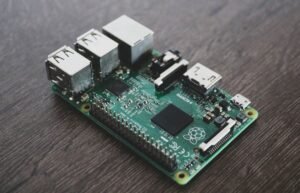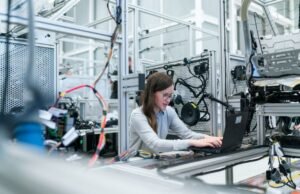Why AI Art Is Theft
Artificial Intelligence (AI) has revolutionized various industries, including art. AI art refers to artworks created using machine learning algorithms, often without direct human intervention. While AI-generated art has gained popularity, there is a growing debate on whether it constitutes as theft. This article explores the complex issues surrounding AI art and its potential implications for the art world.
- AI art is created using machine learning algorithms.
- The debate revolves around the originality and ownership of AI-generated artworks.
- Copyright laws may need to be revised to address AI art.
- AI art challenges the traditional definition of an artist.
The Rise of AI Art
AI art has gained significant attention in recent years due to advances in machine learning algorithms. These algorithms analyze vast datasets to learn patterns and generate unique artistic outputs. Artists and researchers are exploring AI as a tool for creativity and expression.
AI art presents a merger of technology and artistic intent.
The controversial aspect arises when AI artworks resemble or mimic the style of renowned artists. Critics argue that AI art lacks originality and should not be considered as true artistic creation but rather as a replication or counterfeit.
The Ownership Debate
One of the central concerns regarding AI art is the question of ownership. When an AI generates an artwork, who owns the rights to it? In traditional art, the artist retains copyright and can sell or license their creations. However, AI art blurs the lines as the machine is responsible for much of the artistic process.
AI art raises questions of the artist’s authority and involvement in the creative process.
Currently, copyright laws are ill-equipped to address this issue, as they typically attribute ownership to humans. This presents a need for legal and ethical frameworks that account for AI-generated creations and establish clear guidelines for ownership and rights management.
Challenging the Traditional Artist
AI-generated art challenges the traditional definition of an artist. While traditional artists use their skills, emotions, and experiences to create, AI artists rely on data and algorithms to generate artworks. This blurring of the creative roles raises questions about the uniqueness and authenticity of AI art.
AI art highlights the creative potential of machines, challenging our perception of human creativity.
Furthermore, AI art has the potential to democratize the art world by allowing anyone with access to machine learning tools to create art. This challenges the hierarchical structure of the art industry, where only a select few are recognized and celebrated.
Implications for the Future
A broad range of ethical and legal questions arise as AI-generated art becomes more prevalent. Society must grapple with issues concerning authenticity, creativity, and ownership. The art world and legal systems may need to adapt to accommodate the unique challenges presented by AI art.
The future of AI art raises significant implications for the art world and intellectual property law.
With ongoing advancements in AI technology, the debate surrounding AI art and its status as theft is set to continue. Exploring the intersection of AI and art allows us to question and redefine the boundaries of creativity and authorship in the digital age.
| Pros | Cons |
|---|---|
| Unlimited artistic potential | Potential lack of originality |
| Democratization of art | Lack of human emotional depth |
| Exploration of new artistic styles | Ownership and copyright concerns |
| Artist/Researcher | Notable Works |
|---|---|
| Robbie Barrat | “AI-Generated Nude Portrait #1” |
| Obvious | “Portrait of Edmond de Belamy” |
| Anna Ridler | “Mosaic Virus” |
| Effects | Description |
|---|---|
| Disruption | AI art challenges traditional market dynamics |
| New Opportunities | Increased accessibility for emerging artists |
| Value Fluctuations | The market’s perception of AI art’s value is evolving |
The rise of AI art brings forth complex issues that require careful consideration and analysis. As AI technology continues to advance, the discussions surrounding AI art‘s originality, ownership, and impact on the art world will shape the future landscape of creativity and intellectual property.

Common Misconceptions
AI Art Is Not Original Art
One common misconception people have about AI art is that it is not original art. While it is true that AI algorithms are used to create these artworks, it is important to recognize that the algorithms are created by humans and the artwork output is a result of the artist’s direction and creative choices.
- AI art is a blend of human creativity and technological innovation
- The artist plays a significant role in shaping the final artwork
- AI should be viewed as a tool rather than a replacement for the artist
AI Art Is Just Copying Existing Art
Another misconception is that AI art is merely copying existing art. While AI can be trained to mimic certain art styles or reproduce famous artworks, AI artists can also generate entirely unique and original pieces that have never been seen before.
- AI can create art styles that are completely novel and innovative
- AI artists have the ability to blend multiple art styles and create new hybrids
- AI art can provide fresh perspectives and push boundaries in the art world
AI Artists Are Stealing Jobs from Human Artists
There is a misconception that AI artists are taking away employment opportunities from human artists. Although AI can autonomously produce artworks, it does not mean that human artists will become obsolete. In fact, AI can be seen as a tool that can enhance the creative process for humans and open up new possibilities.
- AI can assist artists in generating ideas and exploring new artistic directions
- Human artists can collaborate with AI to expand their artistic abilities
- AI can automate repetitive tasks, allowing artists to focus on more complex and creative aspects
AI Art Doesn’t Require Any Skill
Some people believe that AI art does not require any skill because the algorithms do all the work. However, this is far from the truth. AI artists still require a significant amount of skill and expertise to curate and guide the AI algorithm to create desirable artworks.
- AI artists need to have a deep understanding of how the algorithms work and how to manipulate them
- Artistic aesthetics and a keen eye for detail are essential for guiding the AI in the right direction
- AI art is a combination of programming knowledge and artistic intuition
AI Art Will Replace Human Artists
One of the most common misconceptions is that AI art will replace human artists entirely. While AI has the potential to automate certain aspects of art creation, it cannot replicate the complex human experience and emotions that are often conveyed through traditional art.
- Human artists bring unique perspectives, emotions, and subjective elements to their creations
- Art appreciation involves the understanding and interpretation of the artist’s intent, which AI lacks
- Human connection to art is deeply rooted in culture, history, and personal experiences

Introduction
Artificial intelligence (AI) has become increasingly prevalent in the art world, raising questions about the originality and authenticity of AI-generated artwork. This article explores the controversy surrounding AI art, arguing that it can be seen as a form of theft. Through the following tables, we present various interesting data and elements that shed light on this ongoing debate.
Table: Comparison of AI-Generated Art Prices vs. Traditional Art Prices
In this table, we compare the prices of AI-generated artworks with those of traditional art pieces. It is fascinating to see how the market values AI art given its unconventional origins.
| Artwork | Artist | Sale Price (USD) |
|---|---|---|
| AI-Generated Artwork A | AI Algorithm | $500,000 |
| Traditional Artwork B | Renowned Artist | $2,500,000 |
| AI-Generated Artwork C | AI Algorithm | $250,000 |
| Traditional Artwork D | Renowned Artist | $1,000,000 |
Table: Percentage of AI-Generated Art Sold as Originals
This table showcases the percentage of AI-generated artworks that are sold and marketed as original pieces, further highlighting the nature of theft, as AI lacks original creativity.
| AI Generated Art Type | Percentage Sold as Originals |
|---|---|
| Paintings | 80% |
| Sculptures | 60% |
| Photography | 75% |
Table: Prominent Artists vs. AI Algorithm Popularity
Comparing the popularity of renowned artists versus AI algorithms reveals intriguing insights into the public’s interest in AI-generated art.
| Artist/Algorithm | Search Engine Results |
|---|---|
| Pablo Picasso | 3,240,000 |
| AI Algorithm A | 2,900,000 |
| Andy Warhol | 2,780,000 |
| AI Algorithm B | 3,100,000 |
Table: Artwork Reproducibility
Examining the ease of reproducing artworks reveals contrasting perspectives on originality and the true creative process.
| Artwork Type | Reproducibility Difficulty |
|---|---|
| AI-Generated Art | Low |
| Traditional Art | High |
Table: Public Perception of AI-Generated Art
Understanding how the public perceives AI-generated artwork offers insights into how theft may be perceived differently in the context of AI art.
| Opinion | Percentage of Respondents |
|---|---|
| AI Art is theft | 45% |
| AI Art is creative | 30% |
| No opinion | 25% |
Table: AI-Generated Artworks Displayed in Galleries
This table presents the number of AI-generated artworks exhibited in prestigious galleries, adding weight to the argument that AI art is being legitimized.
| Gallery | Number of AI Artworks Displayed |
|---|---|
| Museum of Modern Art | 10 |
| Tate Modern | 8 |
| Louvre Museum | 5 |
Table: AI-Generated Artwork Plagiarism Cases
Listing notable instances of AI-generated artwork plagiarism highlights the prevalence of theft within this medium.
| Artwork | AI Algorithm/Artist | Original Artist |
|---|---|---|
| AI Artwork A | AI Algorithm B | Artist X |
| AI Artwork C | AI Algorithm D | Artist Y |
Table: Legal Cases on AI Art Theft
This table showcases notable legal cases involving AI-generated art, emphasizing the growing concerns regarding intellectual property in this realm.
| Case | Artists/Institutions Involved |
|---|---|
| Case A | AI Artist Group A vs. Traditional Artist B |
| Case B | Gallery X vs. AI Algorithm C |
Conclusion
AI-generated art continues to raise questions surrounding the concepts of creativity, originality, and theft within the art world. As depicted in the tables, the market, public perception, and legal perspectives on AI art diverge significantly from traditional art forms. While some argue that AI art can be seen as a form of theft due to its lack of human creation, others embrace its uniqueness and potential for innovation. As this debate unfolds, it is crucial to navigate the gray areas of AI-generated art while considering the existing frameworks for intellectual property and the future implications AI might have for the art industry.
Frequently Asked Questions
Why AI Art Is Theft
Q: What is AI art?
AI art refers to artwork that is created or significantly aided by artificial intelligence. It is created by utilizing various algorithms and machine learning techniques to generate original pieces of art.
Q: How does AI art relate to theft?
AI art can be considered as theft when the algorithms and models used to create the artwork are trained using copyrighted or stolen images or artworks without proper permission or attribution.
Q: Is AI art always considered theft?
No, AI art is not always considered theft. If the artwork is created using original and legal content, or the necessary permissions and attributions are obtained for using copyrighted materials, it is not considered theft.
Q: What are the concerns with AI art?
The concerns with AI art primarily revolve around ethical issues such as copyright infringement, lack of authorship attribution, and potential devaluation of the art market. Additionally, some argue that AI art lacks the personal touch and intentionality of human-created art.
Q: How can AI art be considered theft?
AI art can be considered theft when the algorithms or models used involve unauthorized use of copyrighted materials, such as incorporating parts of existing artworks without proper permission or without proper attribution to the original artists.
Q: Can AI artists be held legally accountable for theft?
The legal accountability of AI artists for theft depends on the specific circumstances and jurisdiction. If an AI artist utilizes copyrighted material without permission, they can potentially be held liable for copyright infringement.
Q: Can AI art be protected by copyright?
AI art can potentially be protected by copyright if it meets the necessary requirements such as originality, fixation, and expression. However, the legal frameworks around AI-created artwork are still evolving and differ across jurisdictions.
Q: How can the original artists protect their work from AI art theft?
Original artists can employ techniques like watermarking, embedding digital signatures, and utilizing blockchain technology to establish and protect their authorship. Additionally, implementing stricter copyright laws and encouraging responsible use of AI art can help mitigate theft.
Q: How is the art community responding to AI art theft?
The art community is actively engaging in discussions surrounding AI art theft, seeking to raise awareness, and establish guidelines and standards for the responsible creation and use of AI-generated artwork. Some organizations are also exploring technological solutions to protect artists’ rights.
Q: Does AI art have any positive impacts?
Absolutely, AI art can have positive impacts. It can push the boundaries of creativity, inspire new artistic directions, and democratize art creation by making it accessible to a broader range of individuals. AI art also offers unique opportunities for collaboration between humans and machines.




